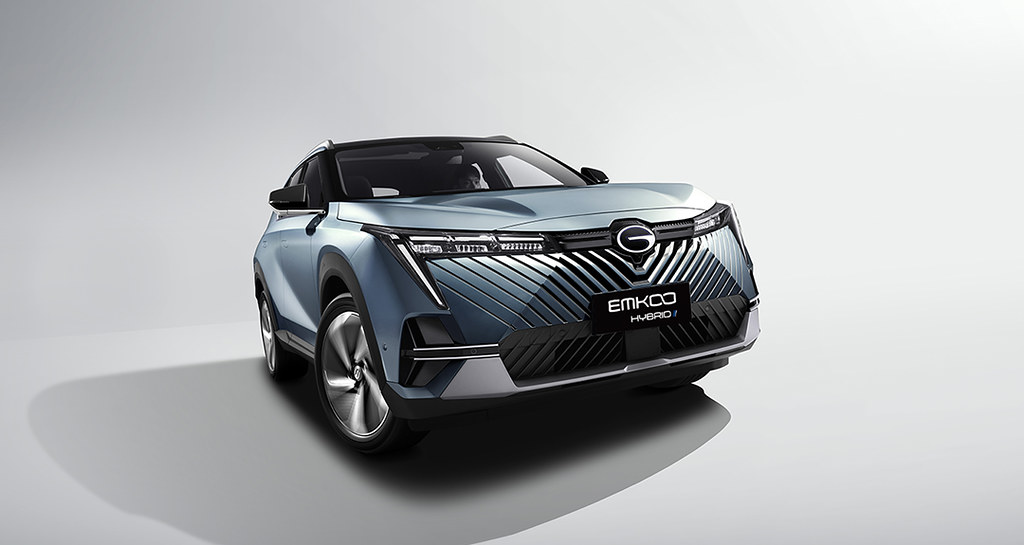At the rate Filipinos are gobbling up crossovers and SUVs, it’s almost surprising that carmakers are still bothering to make sedans at all. Time was when a 4×4 (before the term “sports utility vehicle” was even coined) meant a Range Rover, Mitsubishi Pajero, or Nissan Patrol. That was in the ’80s, when those vehicles could only be afforded by the well to do.
Fast forward a relatively short 30 years later—4x4s are now SUVs. And they come in all shapes and sizes (and price points). The main reason for this rapid evolution can be explained in one word: crossovers. Crossovers allowed carmakers to develop vehicles that have the capability, or at least approach the capability, of sport utility vehicles at relatively low cost and often without the downsides of the 4x4s of old. What downsides? The decidedly unluxurious ride, the truck-like driving dynamics, and unwieldiness, the brick-like aerodynamics, the poor fuel economy, etc., etc.
Crossovers have allowed carmakers like Toyota and Honda to create vehicles that have almost everything you’ll need in an SUV (except for the four-wheel drive; then again, not all SUVs have 4WD anyway). And while the venerable Pajero and Patrol are still around (albeit at vastly higher price points—never mind the Range Rover), Toyota and Honda have come up with crossovers that are just barely over P1 million. These crossovers are the Rush and BR-V, respectively.
Origins. The BR-V actually came first—over a year before the Rush. The BR-V traces its origins to the Mobilio, Honda’s 7-seat MPV. Honda did a good job of transforming an MPV into a legitimate crossover—the most obvious similarity being the identical doors with the distinctive windowline dip on the rear doors. The BR-V’s side mirrors and front fenders came from the Mobilio as well, as do a lot of the interior components like the dash, door panels and seats.
Often, the biggest giveaway of platform-sharing are identical wheelbases. But the BR-V has a slightly longer wheelbase (by 10mm); probably more from revised rear suspension geometry than by an extended floorpan.
The Toyota Rush, meanwhile, is based on the popular Avanza. But you’d never know it by looking at both cars. For one thing the Rush’s wheelbase is a substantial 30 millimeters longer. Its length, width, and height are all substantially bigger as well. There seems to be not a single exterior part or panel that was transferred from one to the other (although if I were to guess, the windshield and door windows might be common).
Ditto the interior, where you’d be equally hard pressed to find common parts. The dash, aircon vents, steering wheel, and touchscreen infotainment system are all different. That’s the might of Toyota manufacturing flexibility at work.
So, how exactly is the Rush related to the Avanza? The answer can be seen when you peek under the hood or under the car. That’s where you’ll see a lot of commonalities and similarities. The engine and gearboxes are about the same, as are the rear axle and a fair number of suspension and brake parts.
Drivetrain. The two crossovers are absolutely neck and neck in this department. They both have variable valve timing-equipped 1.5-liter four-cylinder 16-valve gasoline engines.
But the similarity ends there. The BR-V’s engine is mated to a CVT (which can be shifted manually via paddle shifters) while the Rush uses a traditional four-speed automatic with no paddle shifters.
Between the two gearboxes, performance-minded drivers might prefer the more natural feel of an automatic, which lets an engine achieve high rpm when you dip deeper into the throttle, unlike CVTs that keep the engine at monotonous revs to keep it on the torqueband. Having said that, the BR-V does have paddle shifters that compensate for the CVTs monotony.
Yet another differentiation is where the power is directed. The Honda is decidedly front-wheel drive while the Rush is rear-wheel-driven. The BR-V’s front-drive layout favors light weight (there is no heavy propeller shaft and rear axle) and fuel efficiency. The Rush, on the other hand, enjoys the ruggedness of a heavy-duty propeller shaft and rear axle. It might also be a bit more fun to drive for car enthusiasts who enjoy the driving dynamics of a BMW or Mustang—not that we expect any number of Rush owners to associate its rear-wheel drive with high performance. Just don’t expect to go drifting with the Rush anytime soon—not with 102ps.
All things considered, the Honda enjoys an edge in this department. It has more power, more refinement (less NVH), is more sophisticated, and delivers better fuel economy (8.5km/l versus 8.2km/l, both in city driving).
Interior space, features, and versatility. The BR-V is roughly an inch longer and wider, but the Rush has an inch-longer wheelbase and is almost two inches taller (although that extra inch height advantage is probably more due to Rush’s inch-greater ground clearance). That all results in generally identical interior space for both vehicles, whether for the front, middle-row, or third-row passengers.
For cargo space, it’s a different story. As seven-seaters, the two crossovers have cargo area akin to a small hatchback’s. If you’re traveling with suitcases, you’ll have to fold down the third-row seats.
Honda claims a 223-liter cargo area capacity with the third-row seats up, 470 liters with the third row folded, and 521 liters with the third row folded and tumbled. It also boasts one-touch fold-to-tumble seats (60:40 split for the middle row and 50:50 split for the third row) and middle-row seats that slide and recline.
Toyota, on the other hand, claims 213 liters with the third-row seats up. No figures were given with the third row folded or tumbled, but the five-seat-only Rush E variant has a claimed 514-liter capacity.
The Honda has a notable advantage in cargo area. But another packaging area it leads the Toyota in is with the middle-row seat foot room. I say foot room and not legroom because the Rush has a prominent cabin-wide bulge on the floor just under the middle-row seat that protrudes towards where the heels of the middle-row occupants would be. This forces the passengers to sit with their lower legs stretched forwards, which can be tiring on a long trip. I suspect that the bulge is a result of the rear axle consuming the space where the fuel tank would be—with the tank ending up creating that bulge under the seat.
Features? They both have 7-inch touchscreen infotainment systems with Bluetooth/USB connectivity, although the Rush has eight speakers to the BR-V’s four and adds Aux connectivity.
They both have leather steering wheels with audio controls and each has front and rear airconditioning systems. They also both have smart entry systems with push-button engine start/stop.
Driving performance and ride comfort. The Honda BR-V enjoys an advantage here, primarily from its more modern and sophisticated drivetrain. The Rush’s solid rear axle exacts a penalty in riding comfort, especially at highway or cruising speeds. It’s not as bad as a pickup, but if you’re used to front-drive cars like say, a Toyota Vios, you’ll notice the choppiness. If you’re used to an Innova or Avanza, on the other hand, you’ll be right at home in the Rush.
The one size-smaller (in width and diameter) tires of the BR-V also helps make it handle more responsively. Wider tires may offer more ultimate grip at the limit, but narrower tires will always feel nimbler (also due to their lower overall unsprung weight).
Safety. This is where the Toyota outscores the Honda. Both have dual front airbags, but the Rush adds side and curtain airbags. It has a reverse sensor and a rear camera that projects rearward images to the 7-inch screen to aid reversing. Both have similar front disc/rear drum braking systems with ABS and EBD. Both also have Vehicle Stability Control and Hill Start Assist.
Styling. As styling is purely subjective, there are no winners or losers here. Both sport the usual crossover/SUV garb: roof rails, black fender lips, side sill protectors, and front and rear bumper garnishes. But personally, while the BR-V looks very refined, it’s the more ruggedly handsome styling of the Rush that would probably sway a lot of its buyers. This is where the Rush’s bigger wheels and tires, taller height, and greater ground clearance pay off—which is actually what a lot of crossover buyers look for in the first place. That the Rush shares a lot of its handsome big brother Fortuner’s front styling cues (like the slim headlamps and the fang-like foglights) couldn’t hurt.
VERDICT
It’s hard to imagine that two competing automobiles can be so similar in concept and pricing, differ so dramatically in key areas, yet end up performing very similarly overall.
But this is a comparo so there has to be a winner, right? I hate to be a cop out but the two are truly evenly matched.
So I’ll apply the question: If it were my money, which one will I buy? My answer: If I were to use my brain, it’ll be the Honda BR-V. It pushes all the right buttons in this diehard techie. But if I were to use my heart, it’ll be the Toyota Rush. It just looks so good, especially in Dark Red or Silver Mica Metallic.
HOW IT RATES
| Honda BR-V | Toyota Rush | |
| Design | 8.75 | 9 |
| Build quality | 9 | 9 |
| Driveability | 9.25 | 8.75 |
| Performance | 9 | 8.75 |
| Value for money | 9 | 9 |
| Overall rating | 9 | 8.9 |
SPECIFICATIONS
| Honda BR-V | Toyota Rush | |
| Engine | 120ps/145Nm 1.5-liter gasoline SOHC i-VTEC inline-4 | 102ps/134Nm 1.5-liter gasoline DOHC Dual VVT-i inline-4 |
| Transmission | Earth Dreams Technology CVT with paddle shifters | 4-speed automatic |
| Drive | Front | Rear |
| Suspension (F/R) | MacPherson struts/Torsion beam axle | MacPherson struts/Rigid rear axle with coil springs |
| Tires | 195/60R-16 | 205/60R17 |
| Brakes (F/R) | Vented discs/Drums with ABS and EBD | Vented discs/Drums with ABS and EBD |
| L x W x H (mm) | 4,456 x 1,735 x 1,665 | 4,435 x 1,695 x 1,705 |
| Wheelbase (mm) | 2,662 | 2,685 |
| Ground clearance (mm) | 201 | 220 |
| Seating capacity | 7 | 7 |
| Other features | Drive-by-wire system, Eco Lamp, LED signal lights and tail lights, power-folding side mirrors, leather seats/steering wheel/shift knob/door panels, one 12V accessory socket, 5 cupholders, 4 bottle holders, 3-point seatbelts for all 7 occupants, speed-sensing door locks, auto door-unlock (on Park), anti-theft with engine immobilizer, ISOFIX seats, driver and front passenger seatbelt reminder | Optitron meter gauges, LED headlamps and taillamps, rear spoiler, leather steering wheel, anti-theft with engine immobilizer |


















